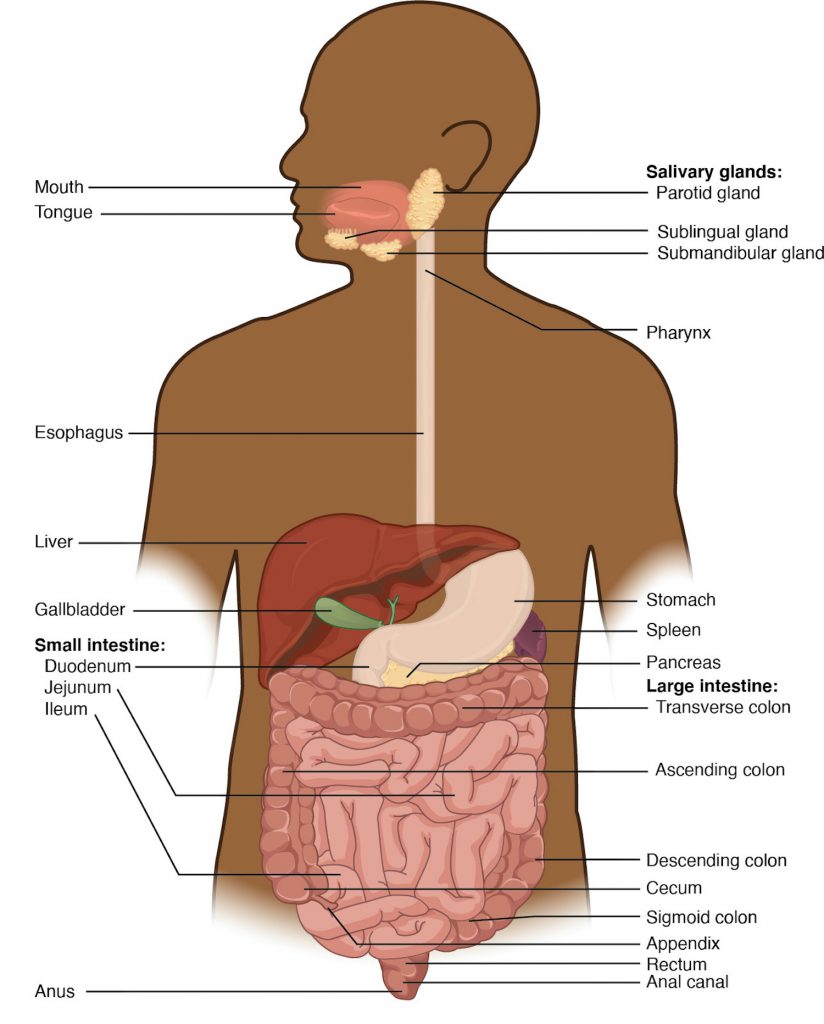Chapter 5 – Gastrointestinal System Assessment
Introduction to Gastrointestinal System
The gastrointestinal system (also called the GI system) is important to assess because it is responsible for nutrition, digestion, absorption, hydration, and . You may also have heard it referred to as the digestive system. As a nurse, your assessment of the GI system provides information about how the system is functioning and potential cues that require action.
GI System Components
As per Figure 5.1, the main components of the GI system include:
- The upper GI tract (oral cavity, esophagus, stomach, and the first part of the small intestine [i.e., the duodenum]).
- The lower GI tract (small and large intestine, rectum, anus).
- The accessory glands and organs (salivary glands, liver, pancreas, gallbladder) and lymphatic organs and tissue (tonsils, spleen, appendix).

Figure 5.1: GI tract
(Attribution statement for image at bottom of page)
You have already learned about the anatomy and physiology of the GI system; See Video 5.1 for a quick overview:
Video 5.1: Overview of the GI system. (Attribution taken from: https://www.khanacademy.org/science/high-school-biology/hs-human-body-systems/hs-the-digestive-and-excretory-systems/v/meet-the-gastrointestinal-tract)
Activity: Check Your Understanding
Attribution statement for Figure 5.1 – Image from: J. Gordon Betts, Kelly A. Young, James A. Wise, Eddie Johnson, Brandon Poe, Dean H. Kruse, Oksana Korol, Jody E. Johnson, Mark Womble, Peter DeSaix, Anatomy and Physiology, OpenStax, Apr 25, 2013, Houston, Texas. Section URL: https://openstax.org/books/anatomy-and-physiology/pages/23-1-overview-of-the-digestive-system. Licenced under Creative Commons CC BY 4.0.
refers to the excretion of the body's indigestible contents through the anus in the form of feces.

